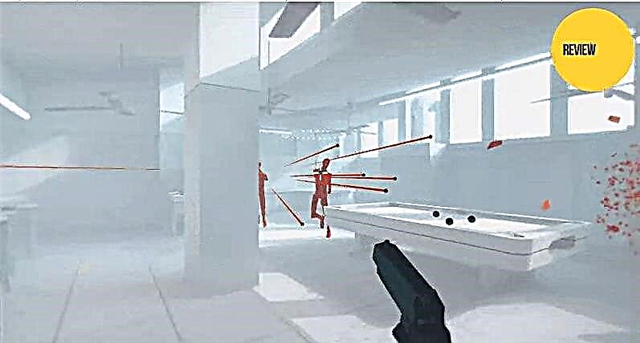We all know that the T-Rex is a huge, ferocious monster from the distant past, eager to devour all living things. In real life, however, Tyrannosaurus Rex hardly lives up to its Hollywood reputation. Today it is widely believed in scientific circles that he was not a predator at all.
In any case, Tyrannosaurus is not the only giant carnivorous dinosaur to live in the Mesozoic era. Compared to some truly terrifying theropods, he may seem like a cute puppy. While the T-Rex will always be the "king of the dinosaurs" in our hearts, it's time to consider other candidates who might rival him for the title.
10. Sinornithosaurus
Sinornithosaurus was a small, feathered dinosaur from the dromaeosaurid family. Velociraptors belong to it. The Sinornithosaurus had an oblong, thin tail and a crocodile-like snout with an intimidating grin. He looked like a small, birdlike lizard with colored feathers.
It is likely that these predators hunted in packs like other dromaeosaurids. But there is not enough evidence. It is considered the first recorded dinosaur with a venomous bite.
It is unclear what properties the poison possessed. It is unknown whether he was fatal or only paralyzed the victims. Nevertheless, even the very idea of such creatures wandering in the night and jumping out of the shadows in order to kill enemies with a single bite, gives goosebumps.
9. Therizinosaurus
Therizinosaurus was a huge monster weighing 5,000 kg, which lived in the territory of modern Mongolia. It had long claws and a giraffe-like neck. At first, it was decided that the remains belonged to an extinct giant sea turtle due to the characteristic forearms. Later it became clear that this is a distant relative of the Tyrannosaurus.
Although the claws of therizinosaurus could have been the envy of even Freddy Krueger, they were used mainly for collecting plant foods. However, this does not mean that the dinosaur was friendly. Scientists are still deciding whether he was a pure vegetarian or occasionally ate smaller animals.
The lack of clarity about dietary preferences is even more daunting. After all, it is unclear whether therizinosaurus will consider you an annoying hindrance or a future dinner.
8. Ceratosaurus
Ceratosaurus was a medium-sized theropod. Lived in the Jurassic period in North America and Europe. It was massive, but had short forelimbs and a large horn-like protuberance on the nasal parts of the skull.
At first glance, it may seem like a prototype of a Tyrannosaurus Rex with some regional differences, but don't be fooled by its simplicity. He was a fierce hunter who relied on one key advantage that distinguished him from its congeners - the ceratosaurus had four toes, rather than the classic three.
It was this slight difference that lifted it high up the Late Jurassic food chain. It can be considered a great achievement that ceratosaurs existed for over 11 million years. This dinosaur deserves much more attention due to its amazing survival skills and unique features.
7. Carnotaurus
Carnotaurus was a theropod dinosaur that lived during the Upper Cretaceous period in what is now South America. It was extremely bulky and had large spikes and bulges all over its body.
Carnotaurus differed from other dinosaurs with its demonic horns located just above the eyes. They were so outstanding that its name literally translates from Latin as "carnivorous bull".
He had very tiny forelimbs. They were even smaller than those of the Tyrrannosaurus and most likely did not carry much practical use. In any case, many paleontologists think so. But make no mistake about the Carnotaurus. It is now widely believed that he was one of the fastest predators in those days.
6. Utaraptor
Presumably a feathered theropod from the dromaeosaurid family. Lived in the territory of modern Utah in the early Cretaceous period. He had a long tail and a streamlined body. It looked like an enlarged version of a Velociraptor.
The Utaraptor was the largest member of his family and reached 7 meters in length. The second toe of its hind legs had a strikingly long sickle-shaped claw of about 23 cm. The lizard weighed about 500 kg and was a dangerous predator.
The Utaraptor stands out for one notable advantage. It turned out to be the first dromaeosaurid in American history to be voted as the official symbol in Utah. Sharp claws, fangs and a new legal status make the Utaraptor an excellent contender for the title of "King of the Dinosaurs".
5. Pachycephalosaurus
Pachycephalosaurus was a herbivorous bipedal representative of the order Ornithischiaceae. Existed in the Late Cretaceous period together with Tyrannosaurus and Triceratops.
The legs, tail and neck were large, and he himself looked rather massive. A distinctive feature was a dense skull with bony horn-like outgrowths. It may have been used as a weapon against predators or rivals. According to researchers, the skull of a pachycephalosaurus was 30 times thicker than a human.
What is really striking is that the pachycephalosaurus might not have been the innocent herbivore originally thought. He was possibly carnivorous. In that case, he could easily ram you with his skull and eat you for dinner.
4. Troodon
Troodon is a bipedal theropod that lived in the late Cretaceous. He was about three meters long, very slender, agile, had sharp teeth and extremely large eyes.
The forelimbs were not particularly long, but there were more teeth than any other theropod. He could move at a speed of 64 km per hour. That is, he was almost as fast as the fastest racehorse.
Most striking is the unusually high intelligence of the Troodon. There is a theory that he was the smartest dinosaur of them all. That is, he could be not just a thoughtless beast, but a meaningful and graceful creature.
3. Giganotosaurus
This carnivorous Upper Cretaceous dinosaur lived in what is now South America. Outwardly, it was similar to most of the giant theropods of that time.
In fact, the Giganotosaurus was even slightly larger than the Tyrranosaurus. Often, Argentinosaurs, the largest herbivorous dinosaurs in the area, became its prey.
Giganotosaurus developed a speed of 50 km per hour and even the fastest man in history could not escape from him. For all these reasons, it was at the very top of the food chain in its habitat.
2. Allosaurus
Allosaurus existed during the Jurassic period and lived in what is now the United States. It is one of the most studied theropods. He was quite slender despite his size. The body was oblong, the limbs were dense, the neck was relatively thin.
Allosaurus ran at a speed of 21 km per hour and it was not difficult for him to overtake his prey.
The body length was 8-11 meters. Allosaurus was so different from the dinosaurs of the Jurassic period that his name literally means "another lizard." Apparently, paleontologists considered it too unique.
1. Spinosaurus
Spinosaurus was a carnivorous theropod and lived in North Africa during the Cretaceous period. It was very large, although the neck, limbs, and tail were relatively thin. Recognized as the largest land-based predator of all time. In this regard, he surpassed even such giants as Tyrranosaurus and Giganotosaurus.
Became famous for the huge "sail", which form the processes of the dorsal and caudal vertebrae. So far, its true purpose is unknown, but it is assumed that it was used to attract partners in a similar way to the peacock's tail. Although the discussions are ongoing.
Spinosaurus was also the only dinosaur that probably crossed with sarcosuchus, a crocodile-like reptile that reached 12 meters in length and weighed about 10 tons. So it is clear that Spinosaurus was quite capable of holding onto the title of "King of the Dinosaurs."
We advise you to see:
In this video you will see the most terrible and bloodthirsty dinosaurs that once walked the Earth. Which one seemed the scariest of them all?



